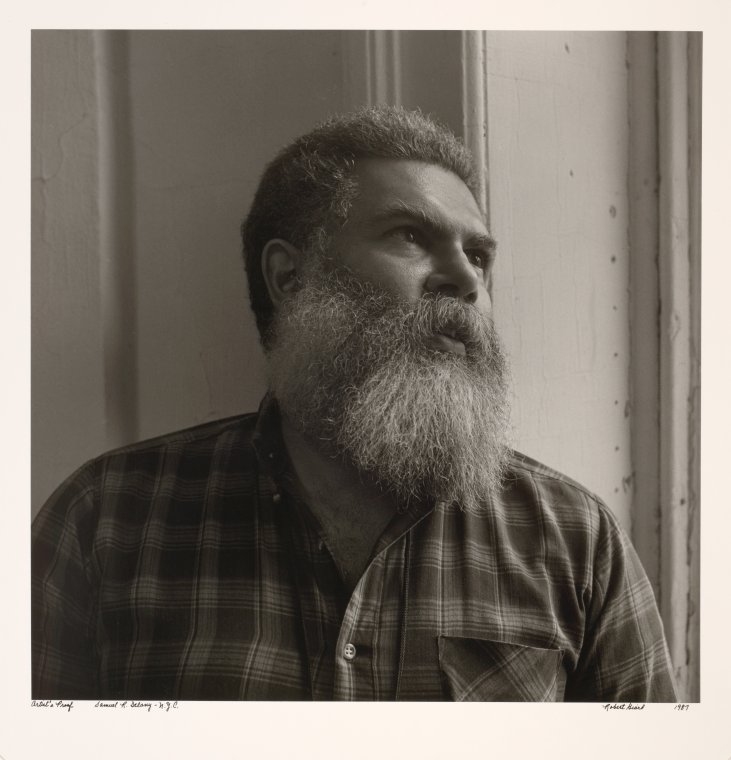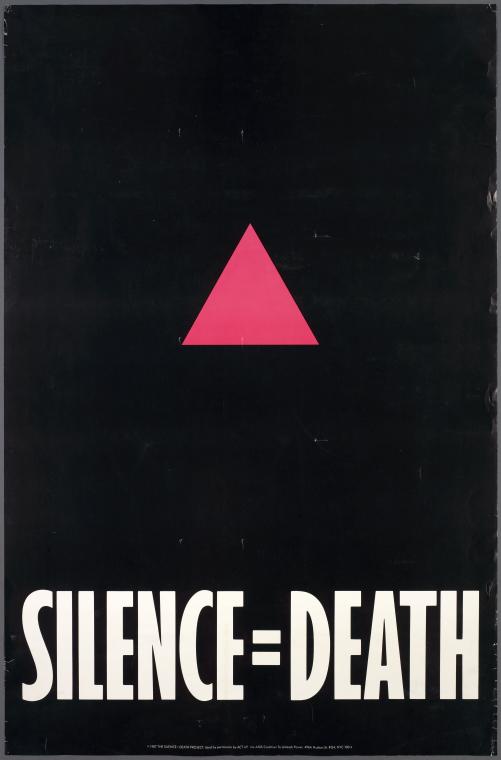LGBTQ at NYPL
The Writings of Samuel R. Delany

—Samuel R. Delany, Dahlgren
(Whatever. You wish you could grow a beard like that...)
Samuel Ray Delany, Jr., a.k.a. “Chip” (a nickname he gave himself at a summer camp, approximately age 12, because all of his friends had nicknames and he didn’t. “They mostly call me Chip” he introduced himself and it stuck to this day).
An African-American writer, born (1942) and raised in Harlem. Predominantly known for his science fiction, but has also written some memoirs, pornography (a term he endorses himself), criticism and some essays on sexuality, writing (literary criticism) and society. Delany was published by the age of 20, with the science fiction novel The Jewels of Aptor, which he had actually written at 19.
A winner of four Nebula awards, two Hugo awards and a Stonewall Book Award over the course of his career, Delany was inducted into the Science Fiction Hall of Fame in 2002.
Although he has identified as homosexual since his adolescence, some have considered him bisexual due to his marriage to Marilyn Hacker (an American poet, translator and critic), that lasted for twelve years and bore a daughter, Iva Hacker-Delany. During the marriage, Delany and Hacker joined and separated multiple times, at some point entering a three-way relationship with another man.
Always coming back to his native New York, Chip Delany has spent some time living in Greece, San Francisco and London. As a teacher at the University of Massachusetts, he lived in Amhurst, as an English professor — in Buffalo, NY, and Philadelphia, as the Director of the Graduate Creative Writing Program at the Temple University.
Highly dyslexic, Delany developed ways of getting around it by primarily constant and endless revisions and rewritings of his manuscripts.
Some of the more prevalent themes in his writings are socioeconomic standing and the move from one social strata to another; race and sexuality; his seeming obsession with unorthodox beauty: large calloused hands; nail-biters; hare-lips; homelessness and mental disorders...
Some of Delany’s creations:
Dhalgren takes place in Bellona, a fictional city in American Midwest that has been cut off from the rest of the world by some unknown catastrophe. There are no communications coming from or going into the city (no radio, TV, or phone). One night two moons show up in the dark, and a red, swollen to а hundred times its size, sun rises one day. Things shift constantly, whereas time contracts and expands. The novel documents the reactions of the few survivors of Bellona to the events taking place there, in particular its protagonist’s, who suffers from amnesia and, possibly, schizophrenia, trying to figure out who he is and where he comes from.
Not the most accessible read, due to its non-linear, circular narration, almost stream of consciousness babble at some points; its lack of linear plot or consistent chronological narrative; its graphic hetero-, homo-, and bisexuality. The novel received both critical acclaim and extreme dislike from both within and outside the science fiction community. A fellow writer stated that Dhalgren is “a terrible book” that “should have been marketed as trash.” (Ouch... probably won’t see that one on the book jacket).
In Stars In My Pocket Like Grains of Sand, the first part of a diptych (whose second part still has not been finished some 28 years later) describes events of the far future, where humans populate over 6,000 planets (sharing them with nonhumans and aliens). RAT (Radical Anxiety Termination), a psychosurgery which makes one a passive slave is performed on Korga, whose story is one of the novel’s main threads. Delany, again, brings issues of race, social standing and sexuality to the forefront of the thematic constellation. Technologies of the future (interconnected web of information, holograms, space travel, etc) and limited access to those technologies by people of certain races (Korga is black) drive the point of disconnection and isolation African Americans have experienced for generations.
Times Square Red, Times Square Blue, a two-part non-fictional discourse, where Chip Delany draws on his personal experiences to examine the relationship between redevelopment of the Times Square and the public sex lives of the working-class men: straight, gay and bisexual, in New York City from the 1960s to the 1990s. In the first part, he shares with the reader about his sexplorations in pornographic theaters in New York (especially those in or around Times Square) and the relationships inside and outside of the theaters. In the second part of the book, Delany philosophies on the nature of human social interaction established in urban settings, in particularly “contact” and “networking.” What brings the two parts of the book together? Well, you are just gonna have to read the book and find out...
Delany’s writings bring up some very important and interesting points. His fiction, although poetic, is not always straight-forward, sometimes without an ending that provides closure, riddle-like. Both his fiction and non-fiction focus on human condition and contact. In his very own life, Delany has demonstrated kindness and compassion to the people he comes into contact with (buying food for the homeless, helping complete strangers with securing a job, sending his writings as materials to people working on research, etc.).

On an unrelated note, a couple of weeks ago New York Magazine published quite a wonderful article/collection of images dedicated to the 25th anniversary of ACT UP. The men and women who started it, who they are and where they are now. Check it out!

Read E-Books with SimplyE
 With your library card, it's easier than ever to choose from more than 300,000 e-books on SimplyE, The New York Public Library's free e-reader app. Gain access to digital resources for all ages, including e-books, audiobooks, databases, and more.
With your library card, it's easier than ever to choose from more than 300,000 e-books on SimplyE, The New York Public Library's free e-reader app. Gain access to digital resources for all ages, including e-books, audiobooks, databases, and more.
If you don’t have an NYPL library card, New York State residents can apply for a digital card online or through SimplyE (available on the App Store or Google Play).
Need more help? Read our guide to using SimplyE.